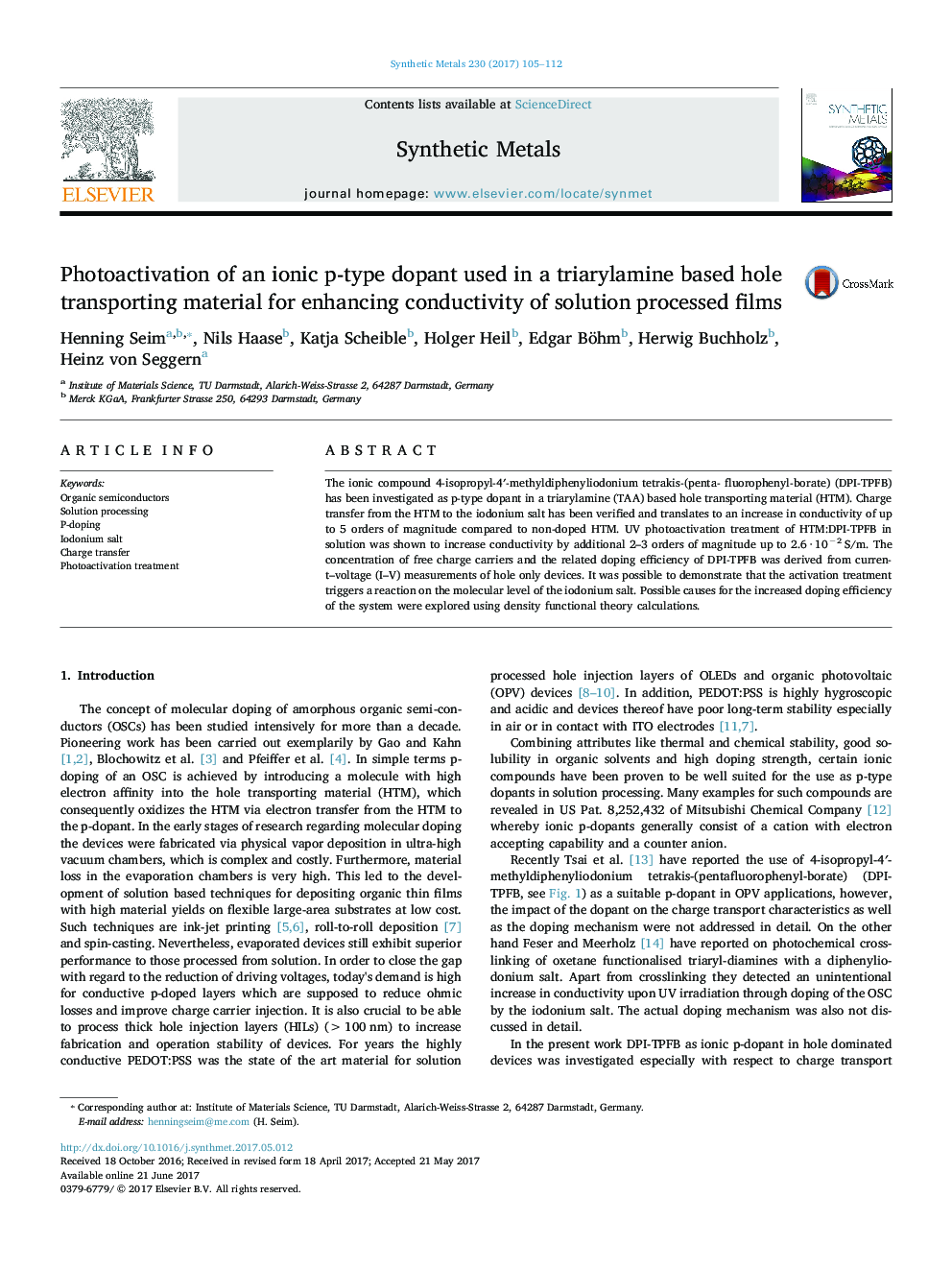| Article ID | Journal | Published Year | Pages | File Type |
|---|---|---|---|---|
| 5435394 | Synthetic Metals | 2017 | 8 Pages |
â¢Charge transfer from a triarylamine to the iodonium salt is confirmed.â¢Quantitative determination of the created free charge carrier concentration.â¢A photoactivation treatment is introduced, increasing doping efficiency 1000-fold.â¢The photoactivation is addressed on a molecular level.
The ionic compound 4-isopropyl-4â²-methyldiphenyliodonium tetrakis-(penta- fluorophenyl-borate) (DPI-TPFB) has been investigated as p-type dopant in a triarylamine (TAA) based hole transporting material (HTM). Charge transfer from the HTM to the iodonium salt has been verified and translates to an increase in conductivity of up to 5 orders of magnitude compared to non-doped HTM. UV photoactivation treatment of HTM:DPI-TPFB in solution was shown to increase conductivity by additional 2-3 orders of magnitude up to 2.6 · 10â2 S/m. The concentration of free charge carriers and the related doping efficiency of DPI-TPFB was derived from current-voltage (I-V) measurements of hole only devices. It was possible to demonstrate that the activation treatment triggers a reaction on the molecular level of the iodonium salt. Possible causes for the increased doping efficiency of the system were explored using density functional theory calculations.
